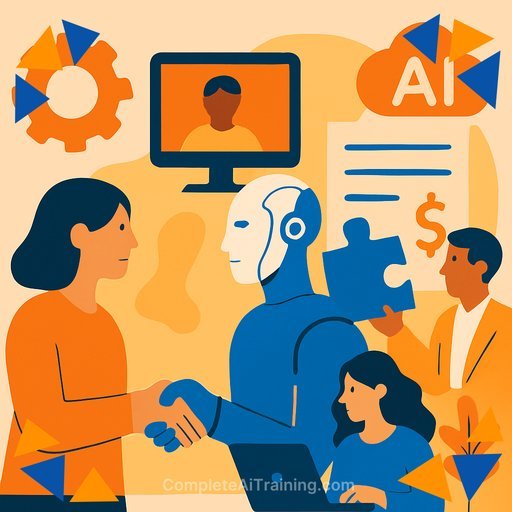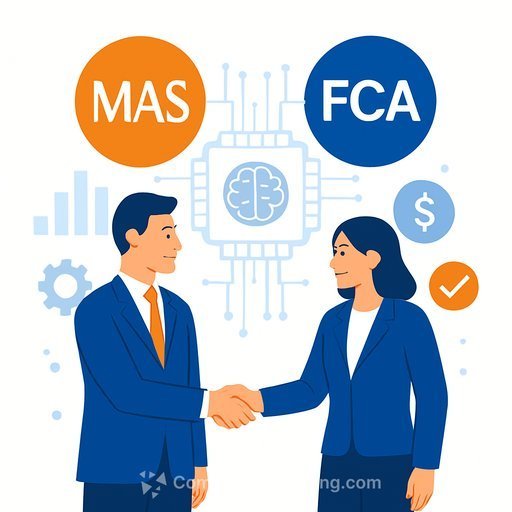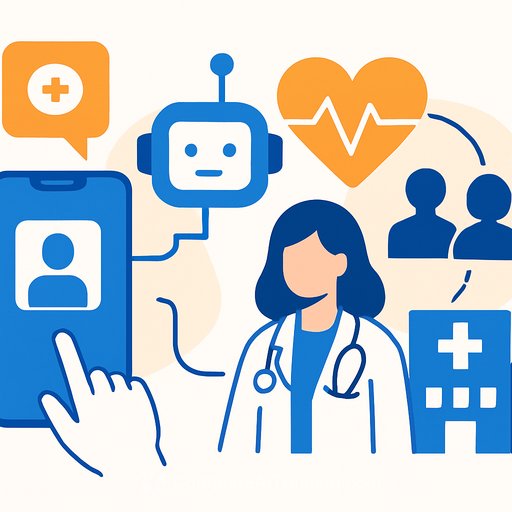HR management in the age of AI: what managers must do next
AI is changing how HR works. It won't replace your HR team; it will force you to redesign the work so people focus on judgment, relationships, and strategy.
Your job as a manager is simple: let AI handle repeatable tasks, and keep the human work human. Here's the practical way to do it.
What AI already does well in HR
- Resume screening and interview scheduling at scale.
- Employee engagement sentiment analysis and trend detection.
- Performance and turnover risk forecasting for earlier interventions.
- Policy Q&A and workflow automation for routine requests.
The win: faster cycle times, consistent processes, and more time for strategic work.
What AI cannot replace
- Resolving conflict with empathy and context.
- Coaching, mentoring, and motivation.
- Culture building and trust.
- Ethical judgment and nuanced decision-making.
Keep a human in the loop wherever stakes are high or context is messy.
Manager's playbook: adopt AI without losing the human edge
- Map use cases: Prioritize high-volume, rules-based work (screening, scheduling, FAQs, reports).
- Fix the data: Clean job descriptions, standardize competencies, tag outcomes. Bad data equals bad decisions.
- Pilot with guardrails: Start small, compare AI vs. human outcomes, and document decisions.
- Check for bias: Run audits by gender, ethnicity, age, disability. Review criteria and outputs. See the EEOC guidance on AI in employment.
- Redesign roles: Shift HR capacity from admin to coaching, workforce planning, and change.
- Measure impact: Time-to-fill, quality-of-hire at 6 months, eNPS, regrettable attrition, HR cost per employee, and fairness metrics.
Governance and ethics that prevent surprises
- Transparency: Tell employees where and how AI is used.
- Human oversight: No fully automated adverse actions. Require review and justification.
- Audit trails: Log prompts, models, versions, and decisions.
- Vendor diligence: Probe training data, bias testing, and security practices.
- Appeals process: Give candidates and employees a clear way to challenge decisions.
Skills your HR team needs next
- Data literacy: reading dashboards, spotting noise, asking better questions.
- Prompt writing and review: structuring inputs and checking outputs.
- Change management: communicating shifts, training managers, managing adoption.
- Coaching and facilitation: deeper 1:1s, conflict resolution, performance conversations.
- Legal basics: privacy, consent, and bias risk in people decisions.
30-60-90 day plan
- Day 0-30: Stand up low-risk wins-interview scheduling, policy chatbots, meeting and performance note summaries. Define metrics and a review cadence.
- Day 31-60: Pilot AI-assisted screening on one role family. Run fairness checks and compare against human-only decisions. Launch manager dashboards for engagement and turnover risk.
- Day 61-90: Formalize governance, expand to two more use cases, and train HRBPs on data-driven coaching. Publish a simple AI use policy employees can understand.
Tooling guidance (keep it simple)
- Augment your ATS with AI screening and scheduling-not a new stack if you can avoid it.
- Use sentiment tools on engagement data, then act with manager playbooks.
- Deploy secure AI assistants for HR ops to cut ticket volume.
The bottom line
AI is a force multiplier for HR, not a threat. Let it speed up repeatable work while your people lean into leadership, judgment, and culture.
If you need a structured way to upskill your team, explore focused training by role here: AI courses by job role.
Your membership also unlocks:






